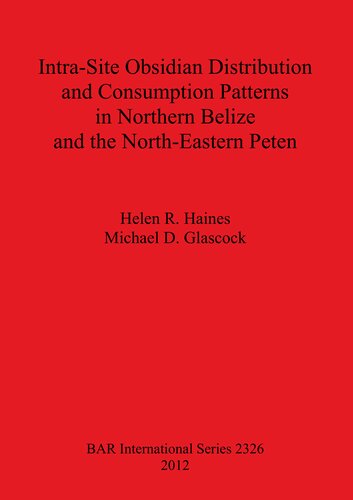

Most ebook files are in PDF format, so you can easily read them using various software such as Foxit Reader or directly on the Google Chrome browser.
Some ebook files are released by publishers in other formats such as .awz, .mobi, .epub, .fb2, etc. You may need to install specific software to read these formats on mobile/PC, such as Calibre.
Please read the tutorial at this link: https://ebookbell.com/faq
We offer FREE conversion to the popular formats you request; however, this may take some time. Therefore, right after payment, please email us, and we will try to provide the service as quickly as possible.
For some exceptional file formats or broken links (if any), please refrain from opening any disputes. Instead, email us first, and we will try to assist within a maximum of 6 hours.
EbookBell Team

4.1
20 reviewsLong-distance trade of obsidian in the Maya realm has been documented as early as the Middle Formative Period (1000-400 BC). Obsidian exchange continued in each succeeding period, through the Post-Classic (AD 900-1525), varying in both intensity and source of origin. It is the temporal variations in source utilisation that have formed the basis for obsidian research in the Maya area. By focusing on the origin of the obsidian and the temporal context these studies provide valuable information in documenting shifts in source utilisation. This work focuses on the distribution and consumption of obsidian on an intra-site scale with an intent to determine if variation in source utilisation can be attributed directly or indirectly to contextual variations. For the purposes of this study three types of context were identified, functional, archaeological and social. Information regarding obsidian consumption was compiled from ten sites and two survey areas spanning four geographic regions across Northern Belize and North-eastern Peten.